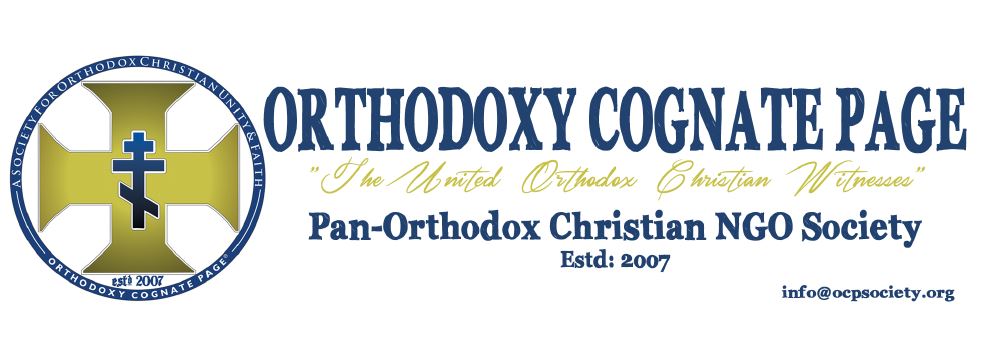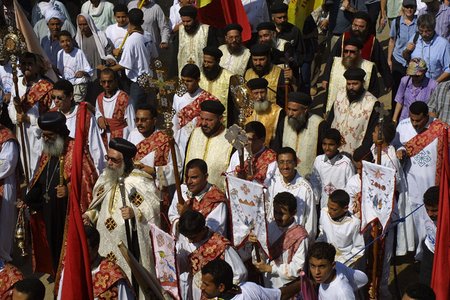Three Churches Attacked, Egyptian Military Sides With Radical Muslims
By Mary Abdelmassih
9/4/2011
(AINA) — In the last two weeks three attacks on churches were undertaken by Salafis or Islamic Fundamentalists in Egypt. The Salafis demanded churches move to locations outside communities and be forbidden from making repairs, “even if they are so dilapidated that the roofs will collapse over the heads of the congregation,” says Father Estephanos Shehata of Samalut Coptic Diocese.
The latest of these incidents took place in the village of Kamadeer, in Samalout, Minya province on April 5, which escalated to the point where it was feared the church would be torched and demolished, as was done in the case of St. George and St. Mina Church in village of Soul, Atfif, on March 5 (AINA 3-5-2011). For three days Muslims occupied the entrance to St. John the Beloved Church in the village of Kamadeer with their mats, praying and sleeping there while thousands of village Copts staged a sit-in for three continuous days in front of the Minya governorate building, vowing not to leave until they got their church back. “Even if it takes one year, we will still be here,” said Fr. Youssab in the rally. The Coptic demonstrators demanded the reopening of their church and prosecution of the squatters (video of Coptic sit-in).
When the priest arrived at St. John the Beloved church on April 5 he found hundreds of Salafis, who told him and the parishioners that arrived for mass they are “not allowed” to pray at this church any longer.
The problem started when the heavy rain in January 2011 caused the church, which is built of clay bricks and has a timber roof, to suffer severe cracks. The Copts requested from the military permission for repairs. Last week inspectors from the local council visited the church and confirmed the church is dilapidated and poses a threat to the parishioners and must be repaired.
“This has angered the Muslims,” said attorney Hani Labib from Kamadeer, “who saw the Copts were going to get permission for renovation because of the state of the church. They told us ‘we allowed you to pray here, but there is no question of any building work to be done, this will have to be over our dead bodies.'” He added that police officers summoned a number of Copts from the Kamadeer village and ordered them to sign affidavits not to pray at the church in “deference to the wishes its Muslims.” But the Copts refused to sign.
“Salafi Sheikh Mohamad Saleh, called on Muslims to prevent the restoration of the church,” said Fr. Estephanos. He added the Muslims said we have to move the church to another location, which was refused. “Because they have built a mosque five meters away from the church, this means that of course the church, which has been there for twelve years, has to move.” He said relationships between Copts and Muslims in the village are usually amicable but the Salafis stepped in and incited Muslims from other villages to besiege the church.
After several calls to the military governor and the governor of Minya and following several meetings, the problem was resolved “to the satisfaction of the Muslims, as usual,” said Coptic activist Wagih Yacoub.
On April 7 an “unofficial reconciliation” meeting was held between the two parties, and according to the signed agreement, The Copts are to relocate the church about 200 meters away from the old church and the new mosque, by exchanging plots of land with one of the Coptic parishioners. Although the new plot of land is 550 meters, Copts are allowed to build on only 175 meters. The new church must be one story high and not two as the old one was, and must not have any manifestations of a church, i.e., a dome, a cross or a bell.
The military governor and the head of Minya security knew of the details of the agreement. “This will set a precedent in Egypt,” said activist Nader Shoukry. “Now this will be used everywhere, since the law is never applied when it comes to Copts. Instead we get those Bedouin ‘unofficial reconciliations.'”
In a second incident, on Sunday March 27 nearly 500 Salafis, armed with swords, batons and knives, stood in front of St. Mary’s church in the Bashtil district of Imbaba, Giza demanding its closure because “this is a Muslim area and no church should be allowed here.” They closed the church door and held a number of the parishioners inside, including children. The terrorized Copts called the army to get them out, especially the children, who were traumatized. The military police arrived, freed the congregation and dispersed the Muslim mob, who lurked nearby “to see if they need to attack again in case the Copts returned to the church,” said a Coptic witness.
St. Mary’s church, which serves 800 Christian families, is a prayer hall inside a services center which includes a kindergarten and a free clinic. It had obtained the approval to operate by the disbanded State Security Intelligence (which operates now under the new name of National Security) in December 2010 and which was until the “January 25 Revolution” the only authority responsible for issuing approvals for churches, even if they had a Presidential decree.
Two Salafi imams, sheikh Gamal and sheikh Mohammad Farag (an auto mechanic by trade), incited Muslims to carry out this siege by claiming Copts wanted to turn the center into a Church without a proper license. The two priests of the church were taken to the Giza Security Directorate to forge an unofficial “reconciliation.” According to Dr. Naguib Ghobrial, head of the Egyptian Union of Human Rights, the police told him they took the priests away because of concerns for their safety.
A few days before this incident, four Salafis from the neighborhood filed a complaint with the local police claiming “the sound of hymns during mass ‘makes their ears ache,'” according to Coptic lawyer Peter el-Naggar. “Fact is the center, which used to be a clothing factory before being bought by the church in 1990, is in the middle of agricultural land.”
After the reconciliation meeting at the Giza Security Directorate, services at the Bashtil center were halted until the church acquires a license to operate, according to Father Hermina, who is in charge of the center.
In the third incident, three days before the Bashtil center incident, St. George’s Church in Beni Ahmad, 7 KM south of Minya was also subjected to Muslim intimidation. The 100 year-old church received three years ago an official permit from Minya governorate allowing for the expansion of its eastern side as well as the erection of a social services center within a small plot of land belonging to the church. Three Salafis together with a large crowd of village Muslims visited the church on Wednesday, March 23 and ordered the church officials to stop construction immediately and undo what they had completed, otherwise they would demolish the church after Friday prayers. They also demanded the church priest, Father Georgy Thabet, leave the village with his family.
Muslims were invited from all neighboring village to be ready for Friday’s demolition if their demands were not met. It was reported the village Coptic youth stood guard inside the church to prevent any Muslim demolition, and Salafis were standing outside church calling for the priest to leave the village as well as hurling insults. Beni Ahmad village has a population of 8,000 Copts and 23,000 Muslims.
The Diocese stepped-in and contacted the authorities who in turn asked them to contact the military governor. A meeting was held between representatives from the church, the Salafis, the army and security in Minya. The Salafis requested the demolition of what was built and the departure of the priest and his family. In the end the military told the Copts they cannot interfere in this case. “In other words the authorities have sold the Copts to the Salafis, to do what they like with them and the church,” commented local Coptic activist Mariam Ragy.
The expansion work has stopped but church services continue with the same priest. The Salafis asked for a “donation” from the church for a so-called kidney dialysis center, “which is not even suitable for animals to live in, let alone being a medical center,” said Ragy.

